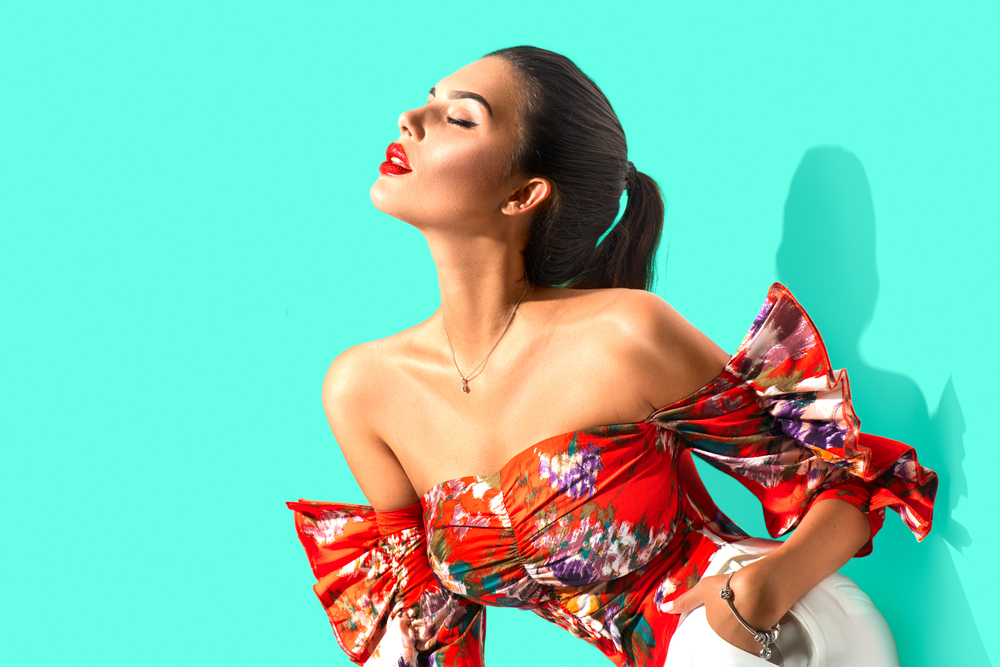
Modeling is an art form that has captivated audiences for decades. The ability to showcase a product or convey a story through the use of imagery is a skill that requires practice, technique, and an understanding of the art of transforming imagery. In this article, we will dive into the secrets of modelling in photoshoots, unraveling the techniques and tricks used by professional models to create captivating and impactful visuals.
Understanding the Power of Body Language
modeling is more than just posing in front of a camera. It's about using body language to convey emotions, tell stories, and create a connection with the viewer. Models must understand the power of body language and how to use it to their advantage.
The way a model holds themselves, the angle at which they position their body, the subtle movements they make - all of these factors contribute to the overall success of a photoshoot. By studying body language and practicing different poses, models can learn to manipulate their movements to convey the desired message.
Working with Facial Expressions
Facial expressions are an essential aspect of modeling (by models) . The ability to convey emotions through a single look can make or break a photoshoot. Models need to learn to control their facial muscles and use their eyes to communicate with the viewer.
A smile can instantly brighten a photograph and create a sense of warmth, while a serious or intense look can convey strength and power. By practicing different expressions in front of a mirror and studying the work of other successful models, aspiring models can hone their skills in expressing a range of emotions through their facial expressions.
The Importance of Posing Techniques
Posing is a fundamental aspect of modelling (or modeling) . When done correctly, it can enhance the overall composition of a photograph and highlight the desired features or products. Models need to understand how to pose in ways that accentuate their physique, create flattering lines, and draw attention to the subject of the photoshoot.
This is where the art of transformation comes into play. By experimenting with different poses and angles, models can create stunning visuals and evoke different moods. It's essential for models to work closely with photographers to achieve the desired result and bring the vision to life.
The Role of Wardrobe and Styling
The clothing and accessories worn by a model play a significant role in transforming the imagery. The right wardrobe can evoke a specific era, theme, or style, instantly transporting the viewer into a different world. Models must understand how to work with wardrobe and styling to enhance the overall concept of a photoshoot.
Whether it's understanding how to drape a fabric elegantly or knowing how to wear accessories to complement the overall look, a model's ability to work with wardrobe and styling is crucial. Attention to detail is essential, as even the slightest adjustment can make a significant difference in the final result.
Mastering the Art of Posture and Movement
A model's posture and movement are key elements in creating captivating imagery. Proper posture not only creates clean lines but also conveys confidence and professionalism. Models must work on strengthening their core, improving their balance, and learning to move gracefully.
Understanding how to move fluidly and elegantly is particularly important for fashion photography. Models need to transition seamlessly between poses, making it appear effortless and natural. This requires practice and an understanding of how the body moves and interacts with the surroundings.
Frequently Asked Questions
Q1: How can I improve my modeling skills?
A1: Improving your modeling (or modelling) skills requires practice and studying the work of successful models. Experiment with different poses, facial expressions, and movements in front of a mirror, and seek feedback from professionals in the industry.
Q2: What are some tips for conveying emotions through facial expressions?
A2: Practice expressing different emotions, study the work of successful models and actors, and focus on using your eyes to convey the desired emotion. Remember that subtlety can be more powerful than exaggeration.
Q3: What should I consider when working with wardrobe and styling?
A3: Pay attention to the overall concept of the photoshoot and ensure that your wardrobe and styling choices align with it. Work closely with the photographer and stylist to bring the vision to life and pay attention to the smallest details.
Q4: How can I improve my posture and movement as a model?
A4: Practice exercises that strengthen your core and improve your balance. Consider taking dance or yoga classes to enhance your body awareness and movement skills. Additionally, study the work of professional models and practice transitioning between poses smoothly.
Q5: What are some tips for working effectively with photographers?
A5: Communicate openly with the photographer, ask for feedback, and be receptive to their direction. Understand the photographer's vision and work collaboratively to bring it to life. Building a rapport with the photographer can lead to a more successful and enjoyable photoshoot experience.
Modeling is a multifaceted art form that requires a combination of technique, practice, and creativity. By understanding the secrets of modeling in photoshoots and honing the necessary skills, aspiring models can bring captivating and transformative imagery to life. Remember, practice makes perfect, so keep experimenting, learning, and pushing the boundaries of your modeling abilities, and you'll be on your way to success.
Other useful resources
- https://blog.planetmodelphoto.com/models/modeling/